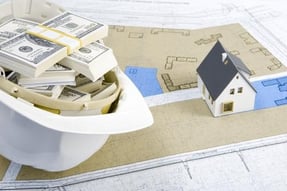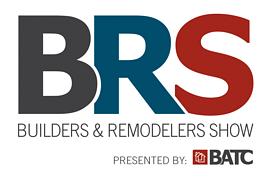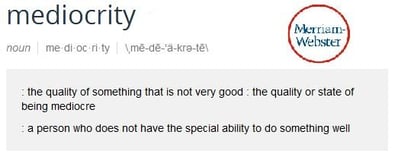3 Financial Strategies for a More Scalable Construction Business
 As 2017 dawns, the outlook for the construction industry is optimistic. Despite setbacks experienced during the Great Recession, the industry is set to add 790,400 jobs over the decade of 2014 to 2024, accounting for the majority of new jobs in the goods-producing sector. Real output will grow 2.8 percent annually during this period. In 2017, total U.S. construction starts will increase 5 percent, reaching $713 billion, anticipates Dodge Data & Analytics.
As 2017 dawns, the outlook for the construction industry is optimistic. Despite setbacks experienced during the Great Recession, the industry is set to add 790,400 jobs over the decade of 2014 to 2024, accounting for the majority of new jobs in the goods-producing sector. Real output will grow 2.8 percent annually during this period. In 2017, total U.S. construction starts will increase 5 percent, reaching $713 billion, anticipates Dodge Data & Analytics.
For contractors, this is great news, but it also presents the challenge of scaling up to meet growing demand. Scaling up requires not only hiring more workers and buying more material, but also adjusting your financial strategy to cover your increased overhead expenses without hurting your cash flow and profits. Here are three financial strategies for successfully scaling up in 2017.
Scale up Revenue while Scaling Down Costs and Expenses
A scalable remodeling business model is designed to allow you to increase revenue while holding both job costs and overhead expenses down. To be scalable, your financial plan should aim for gross profit margins of 40 percent or more (minimum of a 1.67 markup).
 To achieve this level of gross profit margin, one fundamental strategy is increasing your revenue. The key to increasing your revenue is improving your marketing and sales. One of the most efficient ways to improve your marketing is by improving your positioning through a better unique selling proposition (USP): a brief statement that summarizes what you offer customers that your competition doesn’t.
To achieve this level of gross profit margin, one fundamental strategy is increasing your revenue. The key to increasing your revenue is improving your marketing and sales. One of the most efficient ways to improve your marketing is by improving your positioning through a better unique selling proposition (USP): a brief statement that summarizes what you offer customers that your competition doesn’t.
To refine your USP, narrow down your ideal target market. For instance, is there a certain neighborhood or a certain type of building that would be more profitable to specialize in? Research what your target market is most seeking in a construction contractor. For example, are they price shoppers or are quality or service bigger priorities for them? Craft your USP to emphasize what your target market most values and make sure all your marketing material reflects your new USP.
Along with increasing your revenue, the other half of keeping a high profit margin is keeping expenses low. Many construction businesses fail because they can’t cover the cost of overhead. Finding ways to reduce the money you must pay for running your business is key to minimizing your expenses. Taking the time to research different organizational charts, industry best practices, project management methods, business management software and employee compensation strategies based on performance. Investing in these areas now can help your business reduce overhead through efficiency of operations as well as economy of scale as the business grows.
Maintain Efficiency through Automation
 Another effective strategy to lower job costs is automation. Automation can help you lower the costs of materials by helping you plan more precisely to avoid unnecessary waste. J.E. Dunn has partnered with Autodesk and Microsoft to develop Lens, a cloud-based software tool that combines 3-D virtual modeling with instantly-calculated cost estimates for each component of your building project.
Another effective strategy to lower job costs is automation. Automation can help you lower the costs of materials by helping you plan more precisely to avoid unnecessary waste. J.E. Dunn has partnered with Autodesk and Microsoft to develop Lens, a cloud-based software tool that combines 3-D virtual modeling with instantly-calculated cost estimates for each component of your building project.
Although not common yet in residential remodeling, another way automation can help cut materials costs and waste is by using 3-D printing. 3-D printing allows you to select from a wider range of cost-efficient materials, while speeding up the building process. Last year, Chinese company Huashang Tengda was able to assemble a 3-D-printed house in just 45 days. Remember, many said nail guns would never catch on!
Keep Costs and Expenses Down with Outsourcing
 Outsourcing is another proven way to cut labor costs both in the field as well as the office. Many successful large companies outside our industry have used outsourcing effectively to streamline their labor expenses. For instance, Google relies heavily on revenue from pay-per-click advertisers who pay to have their results featured in search engine rankings. Maintaining its advertising revenue requires a large sales support team, which Google has outsourced. Amway is another company that outsources its sales, relying on a distributor model to promote direct sales. In our industry many contractors already outsource activities such as design, engineering, building permit procurement, sales, lead intake and prequalification, RRP demo, specialty trades and even general carpentry.
Outsourcing is another proven way to cut labor costs both in the field as well as the office. Many successful large companies outside our industry have used outsourcing effectively to streamline their labor expenses. For instance, Google relies heavily on revenue from pay-per-click advertisers who pay to have their results featured in search engine rankings. Maintaining its advertising revenue requires a large sales support team, which Google has outsourced. Amway is another company that outsources its sales, relying on a distributor model to promote direct sales. In our industry many contractors already outsource activities such as design, engineering, building permit procurement, sales, lead intake and prequalification, RRP demo, specialty trades and even general carpentry.
As these examples illustrate, you can outsource functions that are part of your core business if it is more efficient to delegate them to specialists than to maintain in-house talent. For instance, there is no need to pay for the expense of in-house 3-D drafting when you can easily outsource it. With the right plan and system you can also easily outsource routine peripheral functions such as bookkeeping and payroll.


 One of the very important things that hands-on contractors who seek to become construction business owners need to get ready for is bringing on sales staff to help the owner sell an adequate volume of work as the business grows. Below is a 10 item checklist contractors can use to help them get ready for this critical step in the growth of their businesses. From my own experience of hiring my first remodeling salesperson many years ago number 10 is the most important.
One of the very important things that hands-on contractors who seek to become construction business owners need to get ready for is bringing on sales staff to help the owner sell an adequate volume of work as the business grows. Below is a 10 item checklist contractors can use to help them get ready for this critical step in the growth of their businesses. From my own experience of hiring my first remodeling salesperson many years ago number 10 is the most important. Establish Sales Goals and a Performance Based Compensation Strategy you can share with candidates as you interview them and your business will use once they are hired.
Establish Sales Goals and a Performance Based Compensation Strategy you can share with candidates as you interview them and your business will use once they are hired. On April 2nd, 2015 I presented a half day marketing workshop titled "Choosing and Targeting the Right Customers and Projects Types for Your Business". The workshop was billed as the keynote session for the
On April 2nd, 2015 I presented a half day marketing workshop titled "Choosing and Targeting the Right Customers and Projects Types for Your Business". The workshop was billed as the keynote session for the  Take advantage of the timing
Take advantage of the timing  Stop taking just any customers and jobs. Be selective about who you will let become your customers. For example why not only work with people who would say they are "working with" you, not those who would say you are "working for them". Also, be selective about the project types you go after. For example why not attract people who want high quality products. If you sell using one markup across all cost categories the gross profit dollars earned on material intensive projects due to higher price point products is an easier way to meet overhead and net profit goals, both now and in the future, particularly when compared to selling and producing labor intensive projects.
Stop taking just any customers and jobs. Be selective about who you will let become your customers. For example why not only work with people who would say they are "working with" you, not those who would say you are "working for them". Also, be selective about the project types you go after. For example why not attract people who want high quality products. If you sell using one markup across all cost categories the gross profit dollars earned on material intensive projects due to higher price point products is an easier way to meet overhead and net profit goals, both now and in the future, particularly when compared to selling and producing labor intensive projects. The old traditional marketing methods of trying to find prospects who want your services now and interrupting them to get their attention no longer work. Today consumers are the ones deciding how they will find and qualify their project ideas as well as the contractor they will work with. Instead use inbound marketing tactics that help consumers find your business. This should be one of the two primary purposes of your marketing and can be accomplished on your web site using SEO tactics and good content on your site’s pages as well as your blog. The other primary purpose of your marketing, particularly at your web site, should be to help prospects decide if what you offer and how you do business are right for them. In other words your marketing should help them prequalify themselves so they either want to contact you or know they shouldn't.
The old traditional marketing methods of trying to find prospects who want your services now and interrupting them to get their attention no longer work. Today consumers are the ones deciding how they will find and qualify their project ideas as well as the contractor they will work with. Instead use inbound marketing tactics that help consumers find your business. This should be one of the two primary purposes of your marketing and can be accomplished on your web site using SEO tactics and good content on your site’s pages as well as your blog. The other primary purpose of your marketing, particularly at your web site, should be to help prospects decide if what you offer and how you do business are right for them. In other words your marketing should help them prequalify themselves so they either want to contact you or know they shouldn't.
 As you grow your business day to day management and leadership considerations can quickly creep up on construction business owners. Profitably growing a remodeling business to any volume, but in particular growing past the $1M threshold in produced work, definitely requires advanced business skills. Growing and running your business by the seat of your pants is a sure way to create a mediocre business that will never generate maximum profits. This article offers several ways business owners can determine if they and their businesses are headed for mediocrity. It also offers options to help you and your business get back on track.
As you grow your business day to day management and leadership considerations can quickly creep up on construction business owners. Profitably growing a remodeling business to any volume, but in particular growing past the $1M threshold in produced work, definitely requires advanced business skills. Growing and running your business by the seat of your pants is a sure way to create a mediocre business that will never generate maximum profits. This article offers several ways business owners can determine if they and their businesses are headed for mediocrity. It also offers options to help you and your business get back on track.
 The first is to let them keep happening. If you allow things to continue you will likely lose customers, compromise your brand, have high employee turnover and you will never fully achieve creating a successful and profitable business. Eventually, when your family and others ask you why you never really succeeded in business, you will again have to resort to rationalizing why it was someone else's fault.
The first is to let them keep happening. If you allow things to continue you will likely lose customers, compromise your brand, have high employee turnover and you will never fully achieve creating a successful and profitable business. Eventually, when your family and others ask you why you never really succeeded in business, you will again have to resort to rationalizing why it was someone else's fault.
 This investor buyer will need a leader/manager to run the company. Before offering your business for sale to this buyer type I suggest you transfer the leadership and the day to day management of your business to a well qualified employee over a period of time. During the evolution you can test and prove his/her effectiveness as a general manager in advance of selling. By taking adequate time to accomplish this important consideration at my business both me and my employees felt good about and respected the new leader, before I fully transitioned out of the day to day.
This investor buyer will need a leader/manager to run the company. Before offering your business for sale to this buyer type I suggest you transfer the leadership and the day to day management of your business to a well qualified employee over a period of time. During the evolution you can test and prove his/her effectiveness as a general manager in advance of selling. By taking adequate time to accomplish this important consideration at my business both me and my employees felt good about and respected the new leader, before I fully transitioned out of the day to day. Having systems and employees in place will be important, but you might want to assume that this buyer will likely change or evolve the systems you have put in place. As a result the employees described above might not like and/or agree with the changes. In particular experienced management employees may not tolerate any loss of the independence they have already earned in performing their day to day roles. If you plan to sell to this type of a buyer, I suggest you assemble employees who desire to follow a leader and will go with the flow.
Having systems and employees in place will be important, but you might want to assume that this buyer will likely change or evolve the systems you have put in place. As a result the employees described above might not like and/or agree with the changes. In particular experienced management employees may not tolerate any loss of the independence they have already earned in performing their day to day roles. If you plan to sell to this type of a buyer, I suggest you assemble employees who desire to follow a leader and will go with the flow.  Since selling my remodeling business in 2004, many remodelers have asked me for help and insight about how I did it and how they too could sell their businesses some day. They ask great questions. The challenge is that there is no easy one size fits all answer. In this article I will share a few big picture considerations to help guide you. In a follow up article I will discuss typical buyer types you can consider as possible prospects to sell to.
Since selling my remodeling business in 2004, many remodelers have asked me for help and insight about how I did it and how they too could sell their businesses some day. They ask great questions. The challenge is that there is no easy one size fits all answer. In this article I will share a few big picture considerations to help guide you. In a follow up article I will discuss typical buyer types you can consider as possible prospects to sell to.
 If you’re considering selling your business some day you will need to consider the types of buyers out there as well as their typical motivations for buying one business versus another. In my next blog I will discuss the two typical buyer types you will want to consider as you make you plan and write your for sale ad.
If you’re considering selling your business some day you will need to consider the types of buyers out there as well as their typical motivations for buying one business versus another. In my next blog I will discuss the two typical buyer types you will want to consider as you make you plan and write your for sale ad. There are many remodeling business myths that seem to have become truths for way too many remodelers. That’s too bad. Believing those myths may be holding them back from being able to grow their businesses. Allowing these myths to remain in place will definitely prevent remodelers from successfully growing their businesses past the $1 Million installed sales threshold.
There are many remodeling business myths that seem to have become truths for way too many remodelers. That’s too bad. Believing those myths may be holding them back from being able to grow their businesses. Allowing these myths to remain in place will definitely prevent remodelers from successfully growing their businesses past the $1 Million installed sales threshold. Again, will you jump off the bridge, too? Will Delta Airlines let you pay after you land? Completing remodeling services without being paid for them before you do them is in my opinion foolish, and a huge risk for most remodelers. It instantly creates cash flow challenges in a business where cash is king. Breaking $1M without good cash flow might be the death of your business. Here is how you can create payment schedules that keep you ahead of your customer:
Again, will you jump off the bridge, too? Will Delta Airlines let you pay after you land? Completing remodeling services without being paid for them before you do them is in my opinion foolish, and a huge risk for most remodelers. It instantly creates cash flow challenges in a business where cash is king. Breaking $1M without good cash flow might be the death of your business. Here is how you can create payment schedules that keep you ahead of your customer: 
 Do a business assessment before you commit to changes
Do a business assessment before you commit to changes

 Owners should seek to put a more refined structure in place for the purpose of better, faster, and more accurate information. This is a critical step towards the owner’s ability to evolve away from the micromanagement of employees.
Owners should seek to put a more refined structure in place for the purpose of better, faster, and more accurate information. This is a critical step towards the owner’s ability to evolve away from the micromanagement of employees. Give salespeople the support they need to support sales less on their own, sell more and keep them selling profitably.
Give salespeople the support they need to support sales less on their own, sell more and keep them selling profitably.
 This stage of business growth is what I refer to as the “Take-Off Stage” for a remodeling business because either the business takes off successfully, or it doesn’t. Another way of looking at it might be either the business owner commits to doing it and doing it right, or accepts the status quo of accidental and unplanned growth.
This stage of business growth is what I refer to as the “Take-Off Stage” for a remodeling business because either the business takes off successfully, or it doesn’t. Another way of looking at it might be either the business owner commits to doing it and doing it right, or accepts the status quo of accidental and unplanned growth. Through experience an advanced
Through experience an advanced 





